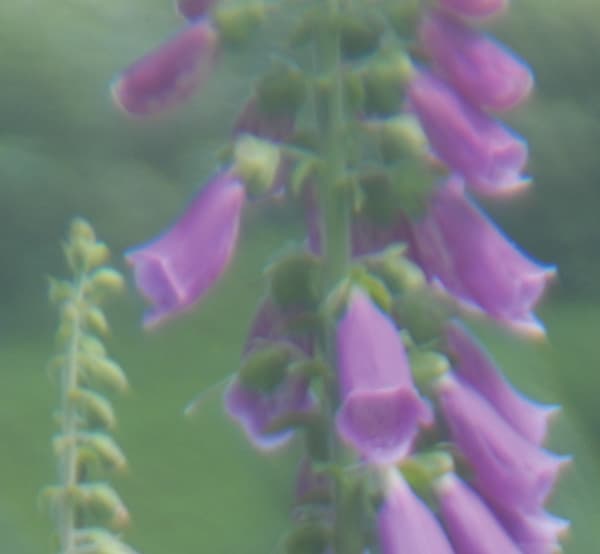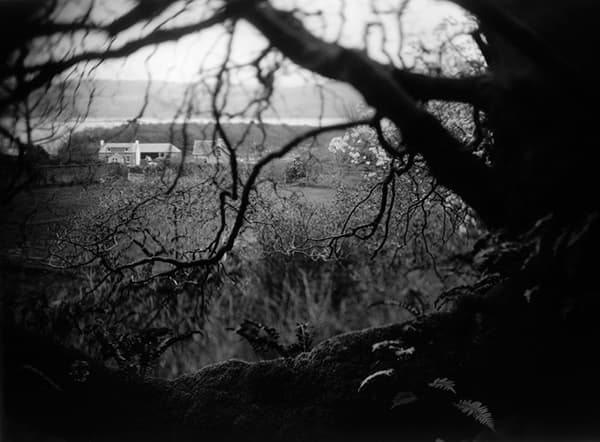A soft-focus effect is usually associated with ‘romantic’ portraits or early glamour shots. However, to see this effect purely in those limiting ways would be to miss out on a very creative tool. Many photographers from the past have employed this look to good effect on all kinds of subjects. The term ‘soft focus’ might seem unambiguous and quite straightforward, but it is not.
Once you begin to look at the huge number of pictures created as ‘soft focus’, you begin to realise that not all have been made with a Cokin soft filter in front of the lens. There are various ways to achieve this look and they can be divided into three categories.
The first is softness in out-of-focus areas due to a very shallow focus. The second is poor optical performance (spherical aberration mainly) and the third is placing something in front of the lens to diffuse the light.

Softness produced by the creative use of out-of-focus areas using an Aero Ektar lens
The first of these is simply soft because it’s out of focus, and the last is just flare. The most interesting type is the middle one – optical aberrations. A soft-focus or diffused image is basically a degraded one. The trick is using it in such a way that it enhances your image.

Simple lenses are not corrected for different colours, so colour fringing can happen. These shots work better in monochrome
Photographers of the Linked Ring, the Photo-Secessionists, pictorial photographers and portrait photographers from Hollywood’s golden era, knew that certain lenses could produce outstanding results when used in a way that exploited their optical faults. If you aren’t familiar with any photographers from the periods I’ve mentioned, I would urge you to look at the work of Baron Adolph de Meyer, Clarence H White, Gertrude Käsebier, Edward Steichen, Heinrich Kühn, Josef Sudek, George Hurrell, Margaret Watkins, and Anne Brigman. Even Edward Weston made soft-focus images before he decided absolute clarity was his thing.
Special lenses were made for the pictorial fashion of the time, some of which have become legendary and fetch high prices even now. These include the Petzval portrait lens, the Wollensak Verito, the Pinkham & Smith, the Aero Ektar and the Dallmeyer Bergheim, to name just a few. Amazingly, an 850mm f/6.8 Hermagis Aplanat fetched more than £10,000 on eBay recently. Apparently, even Leica produced a soft-focus lens once – the Thambar 90mm f/2.2.
My introduction to soft focus was the two soft filters that Cokin produced as part of its filter range, although all these did was diffuse the highlights in a scene. I soon progressed on to other methods of softness. One of my favourites is a home-made teleconverter that I put together when I was at college in about 1979, and I’m still using it.

The swirly background is created using a poor-quality, screw-thread 3x teleconverter with a standard lens used at its widest aperture
I have a number of other lenses I use for these effects. Some are only for use on 35mm, and others are for large format. Each has its own characteristics and quirks, so when I’m shooting I try to bear that in mind.
I own only one classic lens – the others are all home-made contraptions with magnifying glasses in cardboard tubes, or adapted camera lenses. I do not use a diffuser filter any more, because I prefer the look that certain lenses give. I look at these lenses and examples of their images, opposite.

Image from a simple magnifying glass, attached to the camera by a cardboard tube
Projector lenses
These lenses are among my favourites. They are usually very bright and give lovely out-of-focus areas.
Magnifying glass
This is an uncorrected (very soft focus), very fast lens with no aperture. The amount of light coming in to the camera is often too much even for slow emulsions. A makeshift aperture could be fashioned out of black card, which would reduce the light and also give a clearer, sharper image, although this would still be soft in comparison with proper optics, especially in the corners.
Wide-aperture lenses
A lens with an unusually large aperture for its focal length can produce interesting areas of out-of-focus blur, but this is not strictly soft focus. The quality of the out-of-focus areas is known as bokeh.
Converted standard lenses
Some lenses will still perform, but in a totally different way, if you add other lenses to them, such as a concave and a convex, or if you remove one element.
Poor-quality teleconverters
There are 3x converters available for a few pounds which, when combined with basic standard lenses, can give a similar swirl to that achieved with early brass lenses.
Plastic lenses
A simple plastic lens, removed from a toy camera, will give very soft results, especially if you remove the aperture and use it wide open.

Swirl and diffused highlights created by using a plastic lens with no aperture
Tilt-and-shift lenses
Tilt-and-shift lenses are available for many DSLRs these days, but I still prefer to use the facility on a large-format camera, especially with simple optics.
Soft focus
Shooting soft focus can be very effective. It won’t suit everything, so give it a bit of thought. Bright highlights work well, such as sun reflected off water droplets, or backlit subjects, so long as the light isn’t shining into the lens. Soft-focus lenses and filters are susceptible to flare, so pay attention to this. Try shooting with your camera set to black & white or use black & white film.
Kit list

Halina 80mm f/2.8 projector lens: very soft images with glowing highlights.

Vivitar Series 1 35-85mm f/2.8 lens: beautiful softness when used wide open.

Pentax 6×7 with 200mm Zeiss projector lens: shallow focus, swirly backgrounds and good bokeh.

Rear of home-made teleconverter: home-made lenses can be very effective.
About Andrew
Andrew is a photographer, master printer, author and tutor. Visit www.andrewsanderson.com







